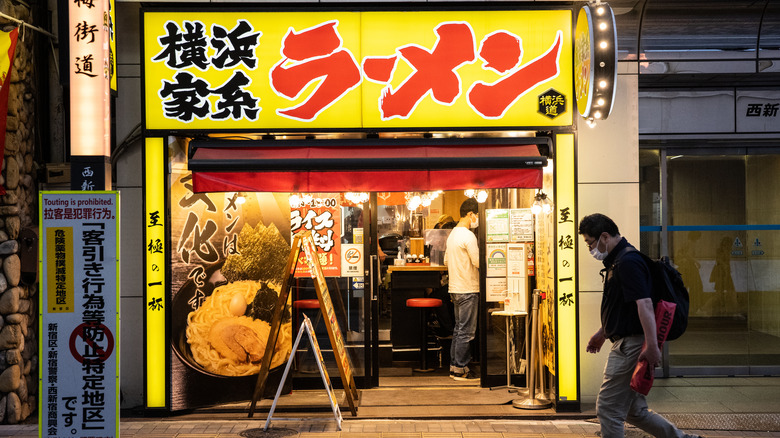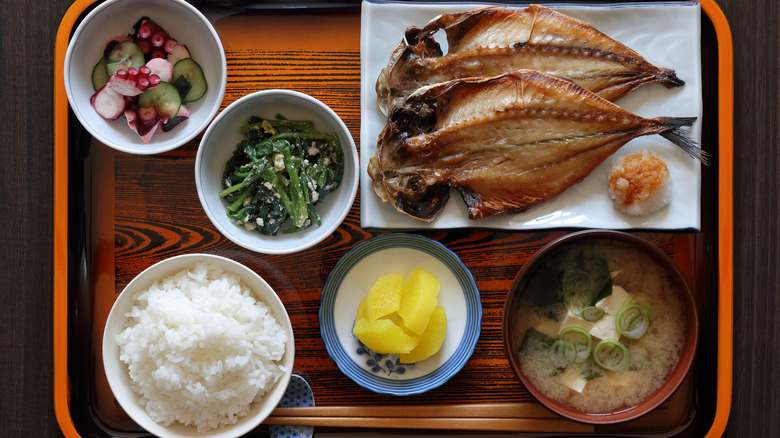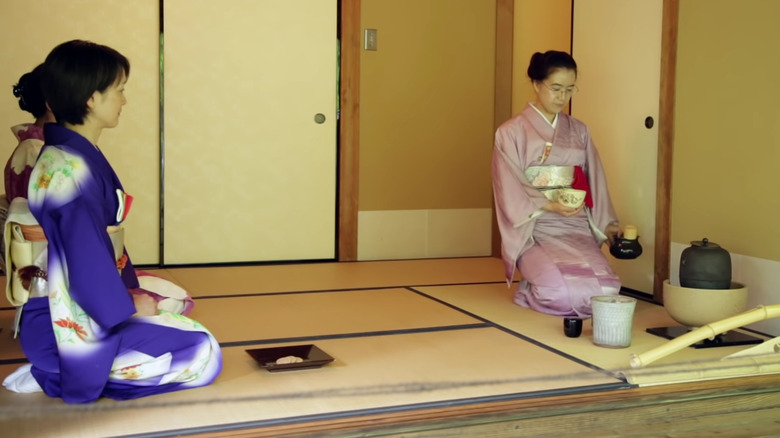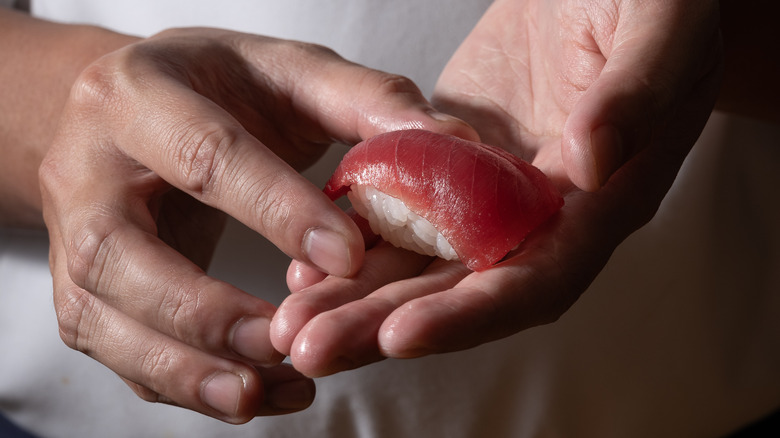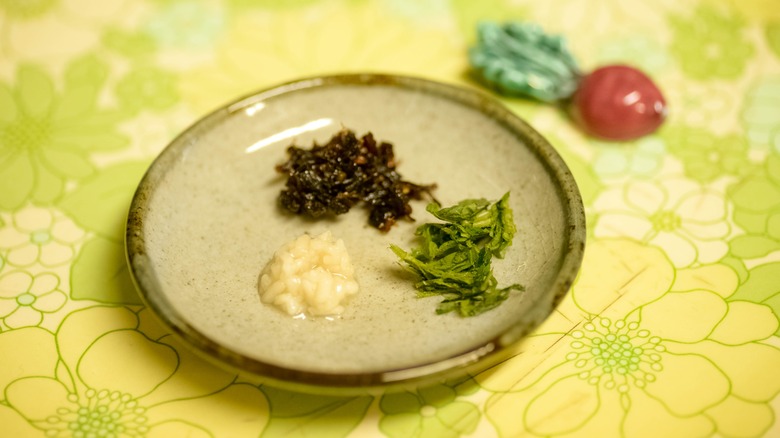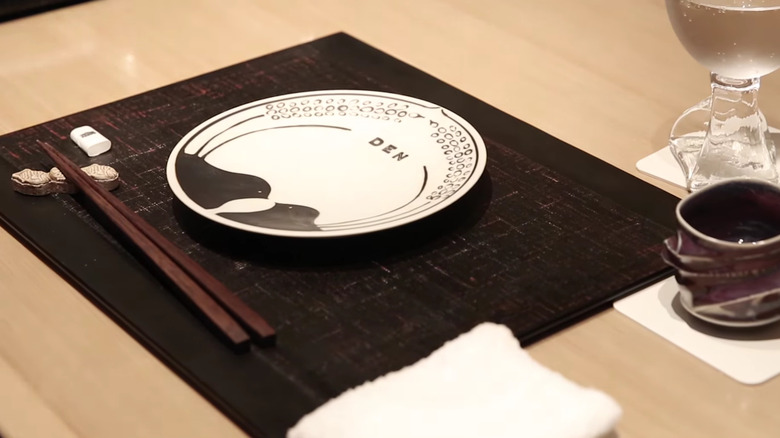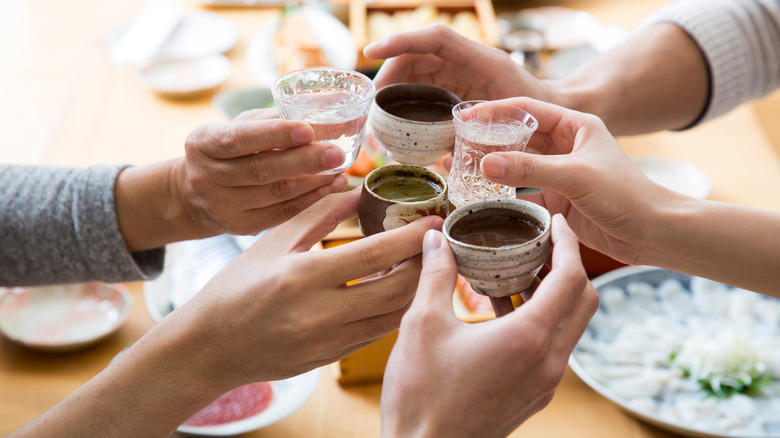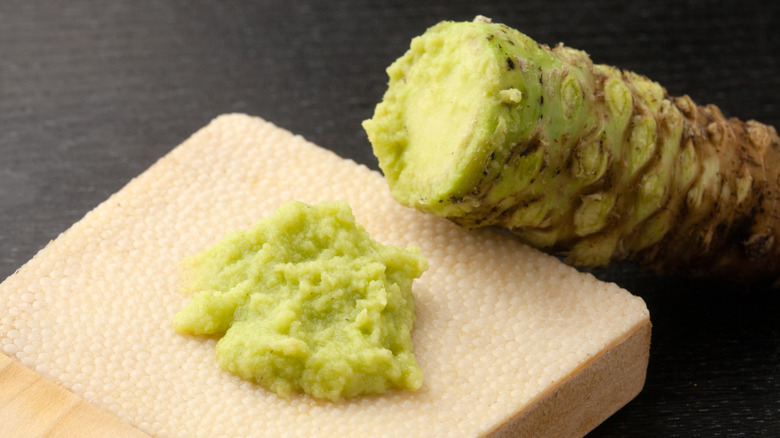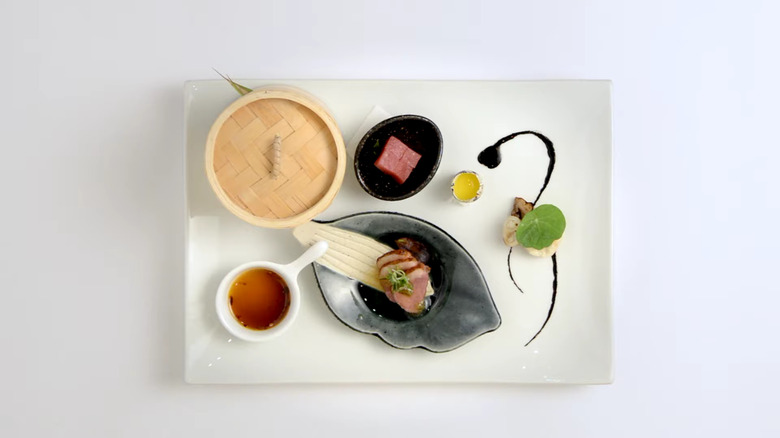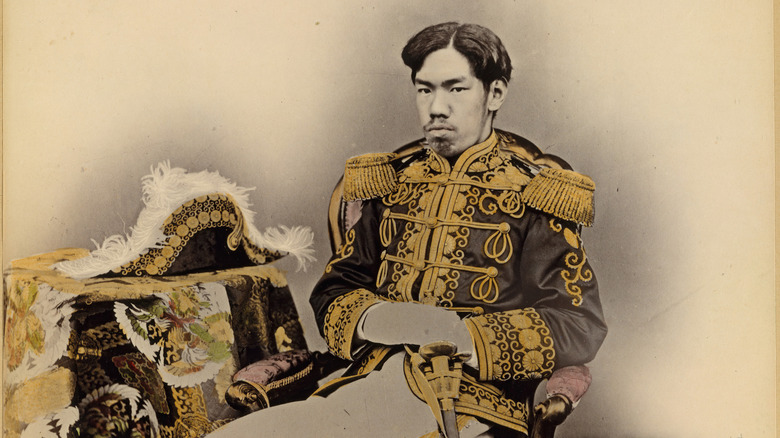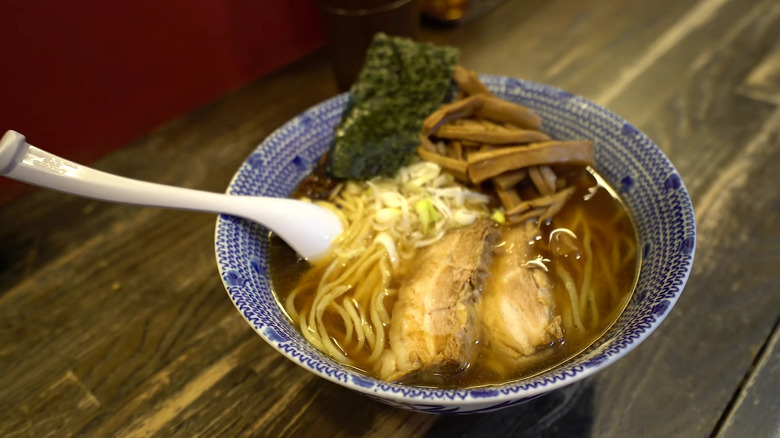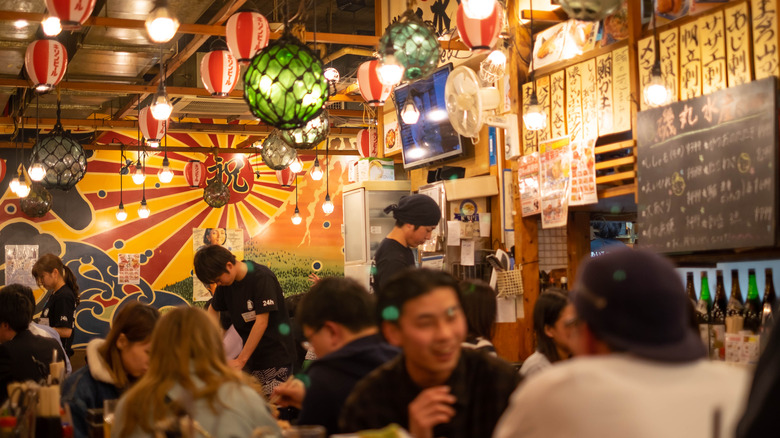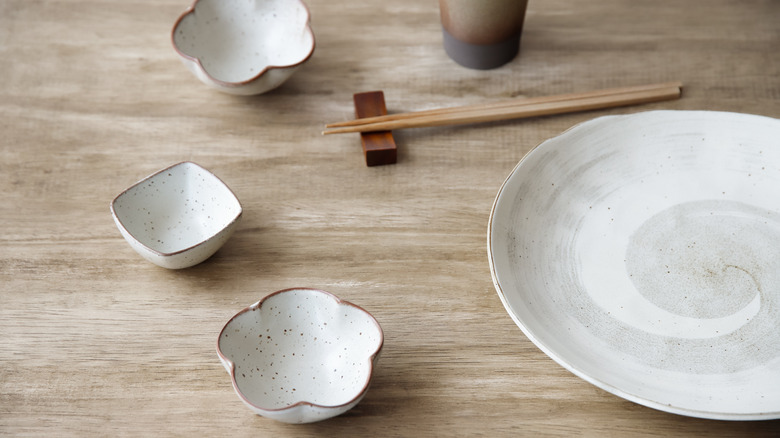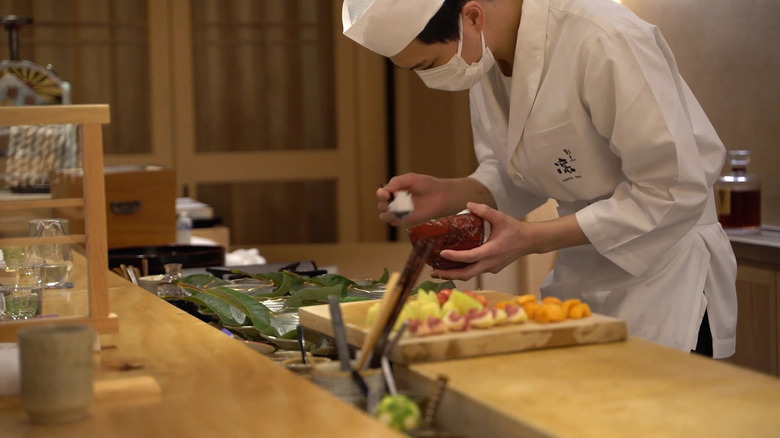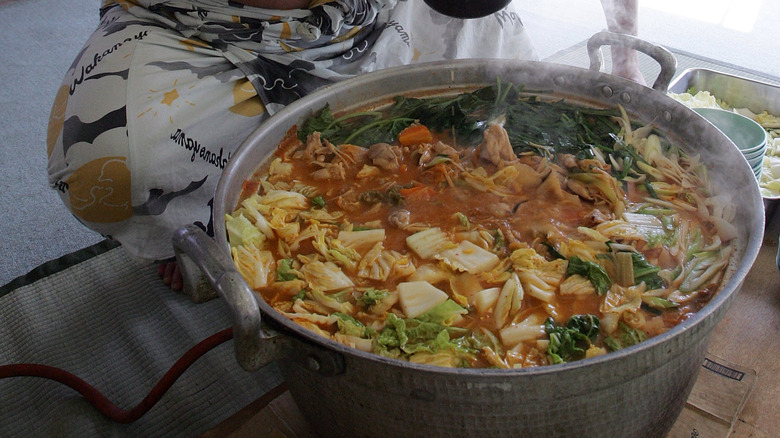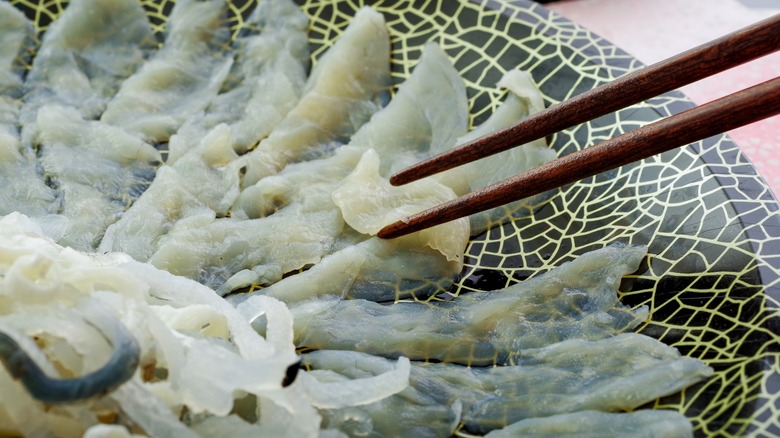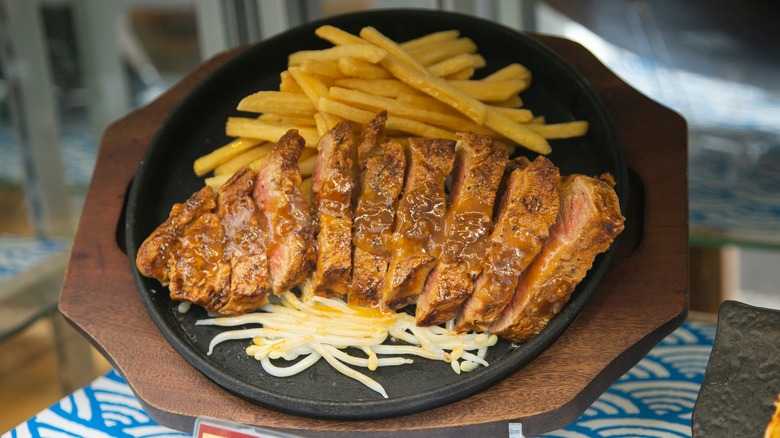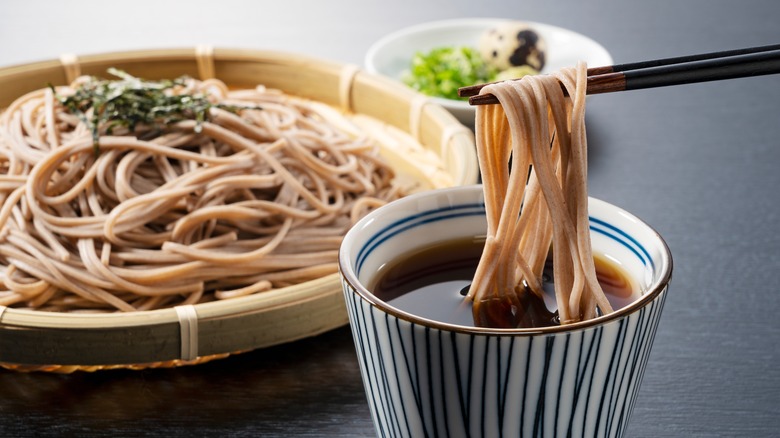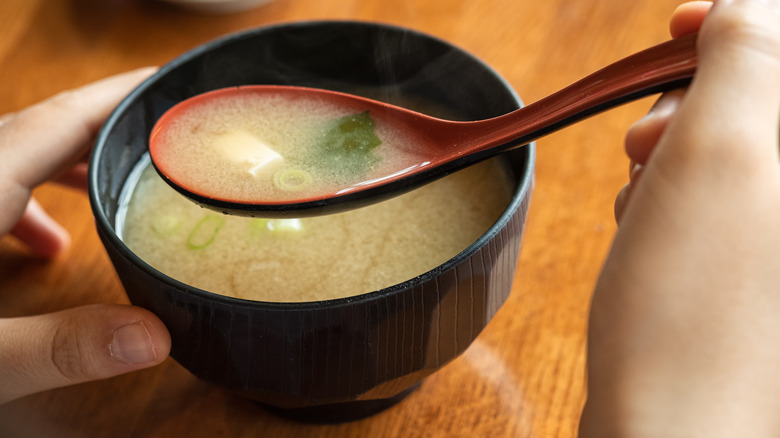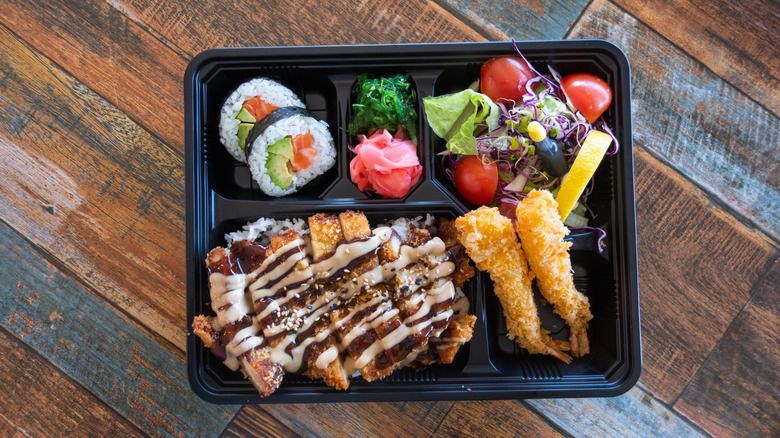19 Facts You Should Know About Japanese Cuisine
Japanese cuisine is one of the most respected in the world by both the general public and food industry professionals. The reasons for the immense popularity of Japanese cuisine are manifold, including its striking presentation and fresh flavors. On a more practical note, growing exports of Japanese food products have also facilitated the cuisine in reaching a worldwide audience.
The cuisine's global popularity, especially in nations such as the United States, belies the poor understanding that many non-Japanese citizens have of it. This is partly down to the striking differences between Japanese and American food cultures. One is defined by restraint, the other by abundance.
It's reasonable to suggest that, on a global scale, Japanese cuisine is widely consumed yet only narrowly understood. This contradiction can be seen in how some foreign consumers undervalue certain aspects of the cuisine, such as rice. As with all things, a greater understanding of Japanese cuisine will only increase the enjoyment that is derived from it. Consequently, we have gathered several interesting facts about it in the hope that they pique your interest in — and develop your knowledge of — one of the world's favorite cuisines.
1. Washoku is recognized by UNESCO
Washoku is the umbrella term for traditional Japanese cuisine. However, the term also encompasses the hyper-seasonal and fresh manner in which food is prepared, as well as the cultural practices and significance attached to certain Japanese meals, especially on celebratory days such as the new year.
Food culture expert, Takeo Koizumi, explained which foods constitute washoku in a conversation with the public relations office of The Government of Japan. "Washoku is comprised of seven principal types of ingredients and one supporting ingredient," he stated. "The principal ingredients include root crops, greens, fruits and vegetables, edible wild plants, pulse crops — of which soybeans are prominent — marine plants, and grains, of which rice is prominent. Added to these is a supporting ingredient consisting of animal protein— fish, meat, eggs, and so on."
The wide-ranging nature of washoku and its importance to Japanese society and culture has landed it on UNESCO's Intangible Cultural Heritage list. This makes it one of only a few cuisines to make the list, which also includes Singapore's community dining rooms and the French gastronomic meal.
2. Chado is an integral part of Japanese cuisine
Food is frequently the main focus when people discuss cuisines. However, Japanese cuisine also boasts a number of beverages that are vital to its identity. Chief amongst these is tea. Tea drinking originated with Buddhist monks in southern China. This practice became commonplace throughout the country around the 8th century, per "Of Tripod and Palate." Buddhism would remain intertwined with the tea drinking practice as it spread from China into Japan during China's Tang dynasty from 618 to 907 A.D.
This Chinese habit of tea drinking was slowly transformed throughout centuries into chado. Chado, also known as sado, is a distinctly Japanese ritual of tea drinking that has been shaped by various Japanese social groups, including the samurai, Buddhist monks, and numerous tea masters.
Chado has remained an important practice that reinforces Japanese national identity, levels social hierarchies, and relieves stress. Many people partake in chado for personal reasons, as highlighted by Jennifer L. Anderson, an anthropology lecturer at San Jose State University. "Today, people in Japan participate in tea (the tea ceremony) for social and spiritual reasons," she explained to National Geographic. "Most enjoy the company of tea friends and the aesthetics of tea — a flower arrangement, a scroll with calligraphy, and the utensils, all of which vary with the season. This has not changed in hundreds of years."
3. Simplicity is the key to sushi
Of the many iconic dishes and food disciplines that make up Japanese cuisine, none are as popular or well-known as sushi. Just like tea, this iconic facet of Japanese cuisine was most likely invented in China and brought to Japan sometime around the 8th century.
Now a popular type of Japanese fast food, sushi was originally was a mixture of cooked rice and fish, both of which fermented over months until ready for consumption. The fresh sushi that we recognize today came about in the early 19th century. During this time, Hanaya Yohei created nigiri, a type of sushi formed of fresh fish atop an oblong of rice.
Yohei's delicate presentation and refined, clean cutting style of sushi have become the hallmark of Japanese cuisine. Yet, when adopted by other nations, sushi often loses its key facet — simplicity. From California's rainbow rolls to spicy tuna rolls, many untraditional spins have been placed on sushi by chefs in countries such as the United States. This fact is lamented by sushi chef Kotaro Kumita in an interview with City Arts. "In Japan, we need to learn basic stuff for many, many years, and then people do a little extra," so said. "But here it's the opposite way. People start with the easy: sauces, spices, crazy rolls. And people don't know the basics. If you don't know the basics, it's hard to do good fusion."
4. Yakumi was traditionally used to kill harmful bacteria
Yakumi are small condiments that can be constituted from a variety of ingredients. What defines them as yakumi is their ability to elevate larger dishes either by adding flavor or improving presentation. For instance, wasabi served with sushi is yakumi, as are sesame seeds sprinkled atop rice.
Before the invention of refrigeration, yakumi played a vital role in making certain foods safe to eat. For example, wasabi has long been served alongside sushi thanks to its antibacterial properties. These are present due to a compound called allyl isothiocyanate. Studies have demonstrated that this compound protects consumers against food poisoning bacteria, such as E.Coli, validating this historical Japanese practice.
Further studies have revealed yet more benefits of consuming yakumi. Journal of Home Economics of Japan reported that yakumi ingestion reduces the carcinogenic effects of numerous mutagens, potentially providing a natural means of protecting humans from diet-induced, chemical cancers.
5. Tokyo is one of the world's premier dining locations
If asked to name the fine dining capital of the world, a person's mind would probably leap to Paris, steeped as it is in culinary history and Michelin stars. However, as exceptional as Paris' dining scene is, it falls short of Tokyo, Japan's capital and the world's most prestigious culinary city. This is not merely a matter of opinion; Tokyo has been the city with the largest number of Michelin stars in the world for more than a decade.
In 2021, Tokyo was home to 12 restaurants with three Michelin stars — more than any other city in the world. This exceptional quality is reflected in the fact that several Tokyo-based restaurants are featured on "The World's 50 Best Restaurants" list. The most prominent of these is undoubtedly Den, which was voted the best restaurant in Asia in 2022 and the 20th best restaurant in the world. Den has achieved this prestigious ranking through an innovative adaptation of Japan's kaiseki culinary framework. Other establishments, such as Narisawa, which has two Michelin stars, have also made a name for themselves by incorporating multiple facets of traditional Japanese cuisine into their meals, including ritualized sake drinking.
6. Sake is the drink of choice for many Japanese citizens
As previously touched upon, food is not the only vital aspect of Japanese cuisine. Just as with tea, sake also plays a very important role in Japanese culinary culture. In fact, more than half of 20- to 29-year-olds and 75% of Japanese citizens aged 50 and over drink sake several days per week. Frequently mislabeled as rice wine, sake is actually produced via a process called multiple parallel fermentation, which significantly differs from winemaking techniques and procedures.
According to the Japan Sake and Shochu Makers Association, China was the first culture to produce alcoholic beverages from rice some 2,500 years ago. The same publication highlights that, although the first written record of sake being consumed in Japan came in the 3rd century, it is thought to have been enjoyed in the country much earlier than this.
Throughout Japan's history, drinking sake has been a practice associated with both serious occasions and celebrations. The most prominent celebration that involves sake drinking is the Japanese wedding, through a ceremony called san-san-ku-do. During san-san-ku-do, both partners take three sips of sake from three different cups.
7. Real wasabi is hard to come by
Anyone that has eaten sushi knows that wasabi is an integral part of the experience; its sinus-clearing spice adds another dimension to the experience. Not only that, but as yakumi, wasabi also forms a pillar of Japanese cuisine. This makes it all the more shocking that the vast majority of wasabi eaten both in Japan and abroad is not wasabi at all, but regular horseradish dyed green.
Speaking to the publication, Brian Oats, president of Pacific Coast Wasabi, estimated that a whopping 99% of all wasabi consumed in the United States is fake, while in Japan he places the figure at 95%. This leads us to the curious situation where an integral facet of Japanese cuisine is one the vast majority of the world has never actually tasted.
The reason for this is quite simple: The wasabi plant is incredibly difficult to grow commercially with the plants frequently dying from disease, improper nutrients, and humidity. Unsurprisingly, it can fetch a hefty sum on the market — approximately $160 per kilo. However, this high value has not managed to significantly boost supply. This fact is all the more disappointing given that the difference between the industrial paste and the freshly grated stem of the wasabi plant is apparently telling. Real wasabi has a sweeter and more nuanced flavor profile than horseradish.
8. Kaiseki ryori is the most formal manifestation of Japanese cuisine
While washoku is an umbrella term for the tradition, ritual, and ethos of Japanese cuisine, kaiseki ryori — or kaiseki for short — encompasses a discipline of the cuisine, one that began life as a light meal served during chado. Kaiseki has since become the most prestigious meal type served in Japanese cuisine. It features multiple, small courses served at intervals and is guided by a strict set of rules that encompasses everything from what foods are prepared, to how and when they are served.
The overarching goal of kaiseki is to capture the essence of the current season. This is highlighted by famed kaiseki chef Ichiro Kubota in an interview with The Caterer. "In spring, we must capture the bitter taste of young buds and leaves," he explained. "In summer, we must convey a sense of coolness, then in autumn, we try to portray its scent. In winter, we try to allude to warmth, even if it is by association."
The format of the meal itself even alludes to the seasons, their impermanence, and ultimately the passing of time. Chef Kyle Connaughton notes, "There are three components in a kaiseki meal: anticipation, peak or 'shun' — when something is at its best — and melancholy [...] a food such as bamboo shoots hints at the diner's mortality, as eating them when they're in season also reminds the Japanese that time is slipping by."
9. Until the 19th century killing animals for meat was banned
The Japanese penchant for fish arose predominantly because, as an island, Japan boasts access to some of the most abundant and interesting marine environments in the world. However, the prevalence of fish in the Japanese diet is also due to social factors, the most prominent of which include the two national religions of Buddhism and Shintoism.
The influence of these religions on diets can be seen throughout the country's history. Many people in Japan considered eating meat to be a sin. Naomishi Ishige, author of "The History of Culture of Japanese Foods," writes "the Buddhist concept of the transmigration of souls and the taboo on mammal meat became linked, and the belief spread that a person who ate the flesh of a four-legged animal would after death be reincarnated as a four-legged animal."
Meat consumption was also banned throughout Japan's history to protect its lands from over-farming. In A.D. 675, Emperor Tenmu banned meat — not including game — in a bid to reduce pressure on the land during the summer months (via Atlas Obscura). However, Japanese cuisine was changed forever during the late 19th century, when Emperor Meiji ended Japan's social and political isolation, and eating meat was no longer banned. The influx of Western people and customs in the country led to Japan's citizens embracing animal protein as part of their diet.
10. Ramen became a vital part of Japanese cuisine during the 20th century
A large bowl of steaming ramen has become an important part of Japanese culture. It is one of the cuisine's most globally prominent dishes, especially in its instant form. However, ramen began life outside of Japan, most likely as a Chinese noodle soup called laa-mien.
As a so-called stamina food, ramen played an important part in Japan's recovery from World War II, when food was scarce and hunger was widespread. After the war-induced food shortage had abated, these wheat-based foods maintained their popularity, becoming a part of the working class diet during the 1960s and beyond. It wasn't until the '80s that ramen became the specialty menu item we know today, complete with chic status and regional nuances.
The ramen culture has spread throughout the world with ramen restaurants becoming popular in major cities from New York to London. In Japan, the modern cultural center of ramen is undoubtedly Fukuoka, which has some 2,000 ramen restaurants.
11. Izakaya-style dining is highly popular in Japan
We have seen how kaiseki-ryori is the pinnacle of Japanese fine dining, but there are many other styles of eating that are popular within the county, not least of which is izakaya. Izakaya establishments are a type of bar, traditionally associated with sake drinking, where customers can enjoy a range of smaller, informal dishes. Traditional izakaya dishes include yakitori, sashimi, and hot pots.
These establishments have been around, in one form or another, since the 17th century when several sake brewers decided to abandon brewing and sell the spirit themselves. Selling food within the same establishments soon followed. Since then, izakaya has become a beloved part of Japanese cuisine and culture, and these establishments are places people go to unwind after work, meet friends, or have a relaxed meal.
The informality of izakaya has also seen this dining format become popular further afield. For example, Zuma is an extremely successful izakaya-inspired bar in Dubai that was voted the best bar in the Middle East and Africa, and the 17th best bar in the world by 50 Best.
12. Dishware is extremely important in Japanese cuisine
Cooking is an art form. This is no more apparent than in Japanese cuisine where dishes are frequently presented in a striking and restrained manner. The extremely high standard for presentation in Japanese cuisine — especially in restaurants — has not occurred by mere chance. Instead, it is the result of a widely-adopted, systematic process — one that prioritizes balance, arrangement, seasonality, and dishware.
In Japanese culture and cuisine, the use of widely-differing dishware throughout the meal is prized. The dishes and bowls differ in color, design, and material with many of them not only accentuating the beauty of the food served upon them but also providing allusions to seasons, places, or objects.
This stunning array of dishware creates a feast for the eyes and boosts the consumer's experience. A study published in the journal Foods reported that Japanese diners found a meal more satisfying if it was served on natural, wooden tableware rather than plastic.
13. Kappo is the middle ground of Japanese cuisine
We have covered both kaiseki ryori, the most formal style of Japanese dining, and izakaya, the most informal; that leaves kappo, a multi-course meal that follows the edict of tasting menus by leaving everything up to the chef. In most kappo restaurants, the diner and chef are in close proximity to one another, with guests often seated around an open kitchen. This seating arrangement lends the meal an air of informality not present during kaiseki meals.
This proximity allows guests to watch the chef at work, as well as interact and learn about ingredients, as food journalist, Steve Dolinsky, explained to The World. "You are sitting at a counter watching the chefs and there's interaction, so I was able to ask questions like 'what was that, how did you slice it, where did that come from?'" he said. "That's the whole point of kappo — you have an interactive experience."
14. Chanko nabe has fueled sumo wrestlers for centuries
For nearly two centuries, the world of sumo wrestling has made its home in the Ryogoku district in Tokyo. The art of sumo wrestling is of such importance in Japanese culture that chanko-nabe, a traditional hot pot that wrestlers eat daily, is now featured in many restaurants in the area and throughout Japan. The restaurants are typically owned and operated by retired sumo wrestlers.
Each sumo stable — where the wrestlers live and train — has its own recipe for chanko-nabe. While there are multiple versions of the dish, the base for all of them is a broth made from chicken stock or dashi. Chicken is a popular ingredient in chanko-nabe, as are a whole host of vegetables, including shiitake mushrooms. The resulting dish is calorific, but it's also full of healthy nutrients. In an interview with NPR, Yamamotoyama Ryūta, a retired sumo wrestler, explained, "Many people still think sumo wrestlers just eat fatty foods. However, that's not true. We eat very healthily. Rice, soup, lots of vegetables, and meat. It's a good balance."
15. Fugu is one of the cuisine's most luxurious ingredients
Fugu is the Japanese word for puffer fish, a group of about 90 different fish species that inflate themselves when alarmed. Many of these fish are highly poisonous. Toxins present in the animal's inner organs are powerful enough to kill humans if quantities as little as one milligram are consumed. As a result, chefs must undergo strict training, lasting at least two years, until they are allowed to process, cook, and serve the fish.
Fugu is a luxurious ingredient for a few reasons. First and foremost is the danger associated with eating it; rarely does a customer put so much trust in the skill of a chef. Yet, eating fugu is not seen simply as a gung-ho way to flirt with danger but rather a means of experiencing and celebrating a chef's skill. Of course, another appeal of fugu is the slight sweet taste and firm texture of the flesh itself, best experienced when served as sashimi. In this style, slices of uncooked fugu are cut so thin that the plate is visible through them. They are also often arranged in the shape of a chrysanthemum to further demonstrate the chef's skill. Fugu-nabe, a hot pot made with fugu, is another popular way of eating the fish. This dish is known for its high levels of umami.
16. Shokuhin sampuru have long been displayed in Japan
Shokuhin sampuru are realistic models of food that adorn many restaurants in Japan, ever since they first hit the mainstream in the 1930s. Aside from luring customers into restaurants, the models also make ordering easier. In an interview with The Guardian, Katsuji Kaneyama, president of a replica food company, said, "Eating out could be a challenge for some people in those days, so restaurateurs saw display models as a way of putting customers at ease [...] The trick is in striking a balance between realism and aestheticism — the model that looks the most delicious isn't necessarily the most realistic."
While still used to promote restaurants, shokuhin sampuru has become an artform in its own right. Across Japan, lifesize models of food are made and painted by hand with incredible skill. It is common for these models to directly represent the food that's sold inside restaurants right down to the condiments and cutlery that's used.
Shokuhin sampuru are becoming increasingly popular outside the restaurant industry. Tourists and locals alike purchase handcrafted models that depict various foods. These do not come cheap; some models even sell for hundreds of dollars and the industry itself is said to be worth billions.
17. Soba is very important to Japanese cuisine
Soba is a traditional type of noodle that's been eaten in Japan for centuries. Made from buckwheat and water, soba noodles have long been considered healthy. These health benefits are generally attributed to rutin, a flavonoid that is thought to have a myriad of benefits thanks to its anti-inflammatory and antioxidant properties.
In Japan, soba noodles are enjoyed both hot and cold, and may be eaten as part of a sit-down meal or as street food like yakisoba. Master soba maker Yoshinori Shibazaki explained this in an interview with the Japan National Tourism Organization saying, "Soba is served either cold with a dipping sauce, or in a hot broth with a variety of different toppings. Many soba connoisseurs in Japan prefer to eat their noodles served cold so they can better savour soba's delicate aroma and flavours."
Regardless of how the soba noodles are enjoyed, diners in Japan are encouraged to slurp them. This is for three reasons. It allows diners to cool the noodles when they are eaten hot, it's said to make the noodles taste better, and it's not seen as poor etiquette, the way it is in Western countries. In fact, some people in Japan view slurping as a sign of appreciation.
18. A Japanese man first identified umami
Although it has been experienced for as long as humans have been eating food, umami was only first identified in 1907, by chemist Kikunae Ikeda. After isolating glutamate crystals from kombu dashi (a seaweed-based soup stock), Kikunae set about manufacturing the glutamate, eventually resulting in the production of monosodium glutamate, otherwise known as MSG. He described the savory taste imparted by this product as umami, a version of the Japanese word for delicious.
Today, umami is lauded as the fifth taste behind sweet, salty, sour, and bitter. Its importance in the culinary setting is unrivaled and chefs frequently turn toward ingredients and applications that will level up a dish's umami and consequently, its overall taste.
In Japanese cuisine, umami is found in many traditional ingredients including bonito flakes, kombu, soy sauce, and shiitake mushrooms. These ingredients allow Japanese dishes to contain vast amounts of umami without becoming fatty. In an interview with Storied, chef Mads Battefeld said, "I'm used to a French kitchen, where they use a lot of butter and cream to create umami [...] But in Japan you have all that dashi and soy sauce — you don't need fat on your palate to savour the flavours. For me, that was the biggest change in realising how clean a dish can be."
19. Bento boxes have been eaten for centuries
Bento boxes are easy to find in Japanese convenience stores. They're a form of packed meal that have a long history in Japan. Popular from as early as the 12th century, bento boxes allowed workers to take food with them to eat during the day. These early bentos contained simple dishes that were often rice-based. Since then, the foods used to fill bento boxes have increased in quality and complexity. Today, it's not uncommon to find ongiri, steak teriyaki, pickles, and even sashimi in bento boxes.
Over the centuries, Japan's bento boxes have become increasingly elaborate with different variations being found across the country. One style that's been popular since the 19th century is ekiben, a type of premade bento that's sold at train stations, particularly shinkansen (bullet train) stations. The popularity of bento boxes hit new highs towards the end of the 20th century. Since this resurgence, aesthetics have become a vital part of the box's appeal. Not only are foods neatly ordered but the boxes themselves, especially lacquered bento boxes, have become works of art. The ultimate expression of visual appeal is found in kyaraben, a popular type of bento where the food is arranged to look like famous cartoon characters.
